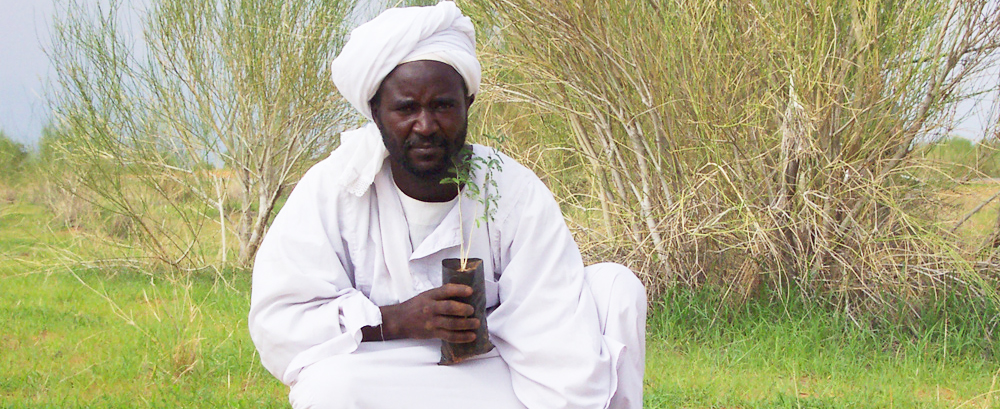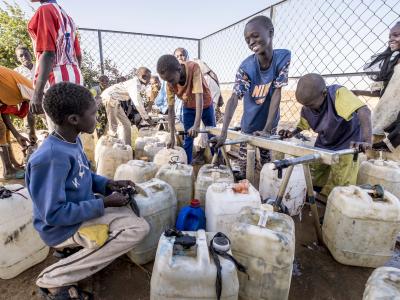Building resilience in the face of climate change within traditional rain fed agricultural and pastoral systems in Sudan
Increasing climate variability is leading to major changes to rainfall and temperatures across Sudan’s arid and semi-arid drylands, exceeding the limited capacity of rural households to cope. Drylands are home to nearly 70 percent of the population of Sudan and there are places where increasingly erratic rainfall has resulted in recurrent drought episodes, together with associated crop failures, livestock deaths, and deepening of the already profound poverty levels. Climatic shocks, particularly drought, are occurring in the absence of adequate social safety nets in rural areas, forcing subsistence agro-pastoralist and nomadic pastoralist households living under deep-rooted levels of poverty into making livelihood decisions out of desperation because their co-dependence on water, agriculture and rangelands is becoming unsustainable. State and federal government budgets, already under strain with development challenges unrelated to climate change, are unable to cope with mounting tolls of a changing climate.
The "Building resilience in the face of climate change within traditional rain fed agricultural and pastoral systems in Sudan" project supports climate change adaptation efforts among subsistence agro-pastoralist and nomadic pastoralist communities in dryland zones across nine states (West Darfur, Central Darfur, East Darfur, Western Kordofan, South Kordofan, Kassala, Red Sea , Northern and Khartoum state). The project will build climate resilience, health, well-being and food and water security for approximately 3.8 million people - almost 1.2 million direct beneficiaries and 2.5 million indirect beneficiaries - accounting for more than 32% of the total population across the nine targeted states, and about 9.2% of the total population of the country.
Its overall goal is to promote a paradigm shift in dryland pastoral and farming systems through i) an integrated approach by increasing resilience of food production systems; ii) improving availability/access to climate resilient water sources; and iii) strengthening capacities of institutions/communities on climate resilience. The project capitalizes on synergies in climate risk management practices across agriculture, water, and rangelands to enhance water and food security under changing climate conditions. Key results are enhanced resilience to climate risks among subsistence farmer and nomadic pastoralist communities and promoting an enabling environment for long-term (post-project) adaptation activities in Sudan. Moreover, the enhanced capacity of the state-level administration in areas of environmental governance, management of shared natural resources, inter- and intra-state relations and how to establish a network of early warning systems will help prevent conflicts and out-mitigation in the targeted areas.
- Image
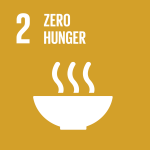
- Image
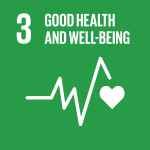
- Image
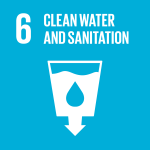
- Image

Expected outcomes
Output 1: Resilience of food production systems and food insecure communities improved in the face of climate change in Sudan, benefiting at least 200,000 households of farmers and pastoralists with 35 percent women
Output 2: Improved access of water for human, livestock and irrigation to sustain livelihoods in the face of climatic risks in the nine targeted states benefiting at least 200,000 households
Output 3: Strengthened capacities and knowledge of institutions and communities on climate change resilience and adaptation
Project details
Levels of intervention
- District
Source of funds
- Green Climate Fund
Key implementers
- Country Office
- National Governments
- United Nations Development Programme (UNDP)
Funding amounts
Project partners
- Government of Sudan
- Sudan Higher Council for Environment and Natural Resources (HCENR)
- Sudan Ministry of Irrigation and Water Resources (MoIWR)
- Sudan Ministry of Agriculture and Natural Resources
- Green Climate Fund
- United Nations Development Programme (UNDP)
Project dates
Introduction
Increasing climate variability is leading to major changes to rainfall and temperatures across Sudan’s arid and semi-arid drylands, exceeding the limited capacity of rural households to cope. Drylands are home to nearly 70 percent of the population of Sudan and there are places where increasingly erratic rainfall has resulted in recurrent drought episodes, together with associated crop failures, livestock deaths, and deepening of the already profound poverty levels. Climatic shocks, particularly drought, are occurring in the absence of adequate social safety nets in rural areas, forcing subsistence agro-pastoralist and nomadic pastoralist households living under deep-rooted levels of poverty into making livelihood decisions out of desperation because their co-dependence on water, agriculture and rangelands is becoming unsustainable. State and federal government budgets, already under strain with development challenges unrelated to climate change, are unable to cope with mounting tolls of a changing climate.
The "Building resilience in the face of climate change within traditional rain fed agricultural and pastoral systems in Sudan" project supports climate change adaptation efforts among subsistence agro-pastoralist and nomadic pastoralist communities in dryland zones across nine states (West Darfur, Central Darfur, East Darfur, Western Kordofan, South Kordofan, Kassala, Red Sea , Northern and Khartoum state). The project will build climate resilience, health, well-being and food and water security for approximately 3.8 million people - almost 1.2 million direct beneficiaries and 2.5 million indirect beneficiaries - accounting for more than 32% of the total population across the nine targeted states, and about 9.2% of the total population of the country.
Its overall goal is to promote a paradigm shift in dryland pastoral and farming systems through i) an integrated approach by increasing resilience of food production systems; ii) improving availability/access to climate resilient water sources; and iii) strengthening capacities of institutions/communities on climate resilience. The project capitalizes on synergies in climate risk management practices across agriculture, water, and rangelands to enhance water and food security under changing climate conditions. Key results are enhanced resilience to climate risks among subsistence farmer and nomadic pastoralist communities and promoting an enabling environment for long-term (post-project) adaptation activities in Sudan. Moreover, the enhanced capacity of the state-level administration in areas of environmental governance, management of shared natural resources, inter- and intra-state relations and how to establish a network of early warning systems will help prevent conflicts and out-mitigation in the targeted areas.
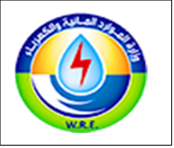



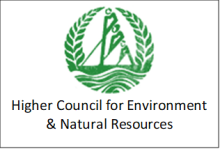
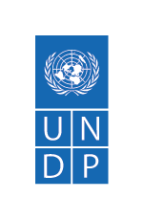
Project details
The project introduces several interventions among highly vulnerable communities in the target communities. First, the project disseminates a set of sustainable technologies and practices including drought-resistant, early maturing seeds, establishment of integrated women-led sustainable farms, rehabilitation of communal rangelands, development of multi-purpose tree nurseries, and the establishment of shelterbelts to shield cultivatable plots from dust storms. Second, the project increases the availability of water resources through the construction and/or rehabilitation of hafirs (i.e. dugout enlargements into which surface-water runoff is converged during the rainy season), water yards (i.e. water extraction and distribution facility which includes borehole, storage tank, animal watering basins and tap stands), and sand water-storage dams (i.e. rain water harvesting structures). Third, the project strengthens local governance by building capacity among local leaders and stakeholders (i.e. village councils, village development committees, popular committees) regarding best practices, as well as increasing capacity of extension agents from state-level offices of the Ministry of Agriculture and Natural Resources and Ministry of Irrigation and Water Resources on sustainable technologies/practices suitable for dryland areas.
In introducing these interventions, the project builds upon the lessons learned from recent climate change adaptation projects such as: The GEF/LDCF-funded Climate Risk Finance for Sustainable and Climate Resilient Rain-fed Farming and Pastoral Systems; the CIDA-funded Implementing Priority Adaptation Measures to Build Resilience of Rainfed Farmer and Pastoral Communities; and the GEF/LDCF-funded Implementing NAPA Priority Interventions to Build Resilience in the Agriculture and Water Sectors to the Adverse Impacts of Climate Change in Sudan. The project complements these initiatives and applies a similarly integrated approach to crop, water and rangeland management that addresses recurring drought concerns and the linkages between agro-pastoralist and nomadic pastoralist livelihoods.
The barriers addressed by the project include weak drought contingency planning; low institutional capacity; limitations in food security research capacity; limited smallholder access to financing; and limited data infrastructure. Micro-credit and micro-finance systems that have been piloted successfully in other regions have been incorporated into project design to promote financial sustainability and overcome some barriers. The project facilitates transformational change in the short-term by building community resilience against climate change impacts, primarily recurrent drought, and in the long-term by integrating lessons learned into state-level planning, budgeting and implementation of risk reduction measures that will ultimately improve livelihoods in the targeted communities.
Project activities will directly benefit nearly 1,200,000 people in over 211,000 subsistence agro-pastoralist and nomadic pastoralist households. These direct beneficiaries are among 138 dryland villages across nine states. These households correspond to 10% of the total population in the targeted regions. Project activities will indirectly benefit an additional nearly 2,499,712 people through autonomous adoption by neighboring communities of the risk mitigation strategies that direct beneficiaries will implement. The project will take advantage of existing linkages with regional and global research institutions such as CGIAR and the Association for Strengthening Agricultural Research in Eastern and Central Africa.
The project’s paradigm shift potential is rooted in the fact that that the specific adaptation interventions can be leveraged to empower women in large numbers across adjoining communities. Providing women with access to information and knowledge on climate change issues can help reverse their lack of power and build their autonomy. In parallel, the implementation of a suite of adaptation initiatives will build resilience among vulnerable rural communities from future climatic shocks that would otherwise deepen their poverty, while also enabling them to diversify household incomes and assets. Moreover, effective adaptation within traditional agricultural systems will not expand in the poorest states in the absence of catalytic donor support.
The project is aligned with Sudan’s priorities as outlined in its Nationally Determined Contribution to the Paris Agreement and is line with Sudan’s Country Work Programme, as submitted to the Green Climate Fund (GCF). Based on a request made to UNDP by the Government of Sudan, Sudan’s National Designated Authority (NDA), the project is also a part of UNDP’s Entity Work Programme to the GCF and is fully aligned with Government priorities upon which UNDP is focusing.
Climate change challenges
Increasing climate variability is leading to major changes to rainfall and temperatures across Sudan’s arid and semi-arid drylands, exceeding the limited capacity of rural households to cope. Drylands are home to nearly 70% of the population of Sudan and there are places where increasingly erratic rainfall has resulted in recurrent drought episodes, together with associated crop failures, livestock deaths, and deepening already profound poverty levels. Notably, climatic shocks, particularly drought, are occurring in the absence of adequate social safety nets in rural areas of Sudan, forcing many subsistence agro-pastoralist and nomadic pastoralist households into making livelihood decisions out of desperation because their co-dependence on water, agriculture, and rangelands is becoming less and less viable. State and federal government budgets, already straining to cope with numerous development challenges unrelated to climate change, are simply unable to cope with the mounting tolls of climate change.
There is strong evidence confirming that Sudan’s climate has been changing over the past decades. First, there has been a steady decline in annual precipitation throughout Sudan. This is most pronounced in the Darfur States, where the data record from the sole meteorological station over the 40-year period from 1952-1992 indicates that rainfall has been declining by about 5.12 mm per year on average. Other areas such as Khartoum and South Kordofan show similar rainfall patterns (decline of 4.90 and 3.99 mm per year, respectively). These trends are reflected by mean annual normal rainfall isohyets. A comparison of the isohyets for the period 1941-1970 and 1971-2000 show that there is a southward shift by hundreds of kilometers.[1]
Moreover, a rainfall trend analysis for 21 meteorological stations across Sudan confirm that mean annual rainfall for the past two decades has been both decreasing and intensifying relative to the 40-year period from 1960 to 2000. This is illustrated in Figure 1 which shows the location of the meteorological stations (top) and indicates that, when compared to the historical period, average annual rainfall declined by an average drop of 9.3 mm per year during the 1990s (middle) and by an average of 23.4 mm per year 2000s (bottom).
These changes have posed profound adverse impacts for rural livelihoods. For faming activities, roughly 90% of cultivated areas depend exclusively on rainfall, with fluctuations in crop yield attributed almost solely to fluctuations in rainfall patterns. While irrigated agriculture is also practiced, it is minor in scope and limited to small areas along wadis and in small plots near hand-dug wells. For pastoralist activities, increasingly erratic rainfall patterns, as well as drought episodes, have led to the deterioration of natural rangelands. Declining rangeland productivity has been accompanied by an increase in seasonal fires, excessive grazing in communal lands, and by large livestock populations unsustainably concentrated around perennial water sources.
Second, there has also been a steady increase in temperature throughout Sudan over the period 1960-2010. During the March-June and June-September periods, temperatures have been increasing between 0.2°C and 0.4°C per decade, on average. The decadal trend of increasing temperature is more intense during the March-June period. When averaged across all seasons, temperatures in the 2000-2009 period are roughly 0.8°C to 1.6°C warmer than they were in the 1960-1969 period. Figure 2 illustrates annual average temperature trends for a subset of 6 meteorological stations located across Sudan (top) for the period 1960-2010 (bottom).
Third, the above adverse changes in rainfall and temperature have been accompanied by recurrent drought episodes across Sudan since the 1970s. There have been widespread recurring droughts across Sudan during the period 1967-1973 and again during the period 1980-1984, the latter period being the more severe. In addition, there have been a series of spatially localized droughts during the years 1987, 1989, 1990, 1991, and 1993. These drought episodes have occurred mainly in Kordofan and Darfur states in western Sudan and in parts of central Sudan near Khartoum.
Such mounting evidence of decreasing rainfall and increased temperatures, have reduced available grazing lands, have led to crop failures, high livestock mortality and increased rural to urban migration. These climate-related impacts have also aggravated urban health and sanitation concerns. Together this evidence suggests that drought has been a major stress factor on farmer and pastoralist communities and has worsened regional conflicts over environmental resources. Additional information on the climate rationale underlying project design is provided in Annex 19f.
In the future, these climatic changes are projected to intensify. Dynamic downscaling of an ensemble of General Circulation Modeling outputs suggests that over the next two decades, average annual surface temperatures across Sudan will increase significantly relative to the historical climatic baseline, with increasing levels of rainfall variability. This is illustrated in Figure 3 which shows an ensemble of temperature and rainfall projections under Representative Concentration Pathway 8.5 (RCP8.5) for three meteorological stations with sharply differing annual historical rainfall regimes: Port Sudan (medium annual rainfall), Dongola (low annual rainfall), and Gedaref (high annual rainfall).
Baseline situation
The baseline situation is one in which rural households in Sudan are becoming increasingly unable to withstand and recover from climatic shocks, particularly drought. While there are other types of shocks that farmer/pastoralist households are forced to endure related to health, forced migration, or conflicts, they are largely derivative of an inability to effectively cope with recurring drought episodes. This vulnerability is likely to intensify for dryland households in Sudan in the absence of effective climate change adaptation interventions that build increased resilience to drought.
Since subsistence agro-pastoralist and nomadic pastoralist households derive a large share of their income from crop- and/or livestock-related activities, they are also particularly sensitive to drought. Household income from rainfed agriculture and pasture-based livestock production is far more vulnerable to climatic shocks than, for example, irrigated agriculture or other less shock-impacted activities such as the so-called cottage industries (i.e. a business activity carried on in an agro-pastoralist’s home). At present and likely for the foreseeable future, sensitivity to drought among dryland households is largely determined based on prevailing risk-hedging strategies that regard land, water, and livestock – and the mix of those resources – as essential to livelihood preservation. To the extent that household incomes are not diversified, or alternative income-generating strategies not introduced, sensitivity to drought is expected to remain unacceptably high.
The ability of farmer/pastoralist households to cope with droughts has been compromised by the increasing frequency of drought episodes. In the baseline situation, the time between climatic shocks is becoming shorter and shorter, leading to inadequate time to rebuild household assets to withstand subsequent weather-related shocks. Given the lack of governmental safety nets and access to credit, households are forced to rely on their own already depleted savings and assets to try and make up as best they can for food/income shortfalls. Hence, the liquidation of household assets to limit the harmful impacts of a drought episode is becoming less and less of a viable risk-hedging strategy, forcing households into increasingly desperate circumstances.
Taken together, the exposure and sensitivity of farmer/pastoralist households combined with their compromised coping capacity infers that overall vulnerability to climatic shocks is high in the baseline situation. Assent effective adaptation measures, climatic variability has become largely incompatible with traditional agro-pastoralist practices regarding crop selection, water resource management, communal rangeland management, drought preparedness, and household income generation. Additionally, access to tools and extension services designed to build adaptive capacity remains quite low given the overall lack of knowledge to make informed decisions under climate change.
States targeted for project activities
The target region of the project consists of 138 villages in dryland zones across 9 states in Sudan. The selection of these villages has been based on several common characteristics, namely subsistence agro-pastoralists and nomadic pastoralists who are highly vulnerable to climate change, with few opportunities for household income diversification and adaptation. Despite their vulnerability, local populations have little access to measures and practices that can increase their resilience in the face of climate change. A brief description of the major targeted state characteristics, together with key dimensions of vulnerability to climate change, is provided in the bullets below.
West Darfur: West Darfur is characterized by great environmental diversity with seasonal valleys that can sustain forests, rangelands, and agriculture. About 80% of the state's economy is based on cash crops and livestock production. Nevertheless, the state has a history of chronic food insecurity - it is the most food insecure region in Sudan with greater than 40% of the population unable to obtain a health daily diet.
East Darfur: East Darfur is largely characterized by nomadic tribes facing acute water scarcity. Increasingly rainfall variability has led to serious rangeland degradation and in some cases, the disappearance of essential grasses and herbs. Nomads who rely on these resources have been forced to cope by resorting to inferior options for feeding their livestock, namely lower quality tree leaves; limited crop residues, or moving across the border to South Sudan. East Darfur has become the home for significant numbers of displaced people from other Darfur states, all suffering from reduced rainfall. This has amplified the consequences of climatic change for the state and further exacerbated environmental degradation and socio-economic disruption.
Central Darfur: Central Darfur is characterized by diverse climate and soils, including volcanic soils in Jebel Marra (a mountainous area) sandy, clay and alluvial soils in the different valleys traverse the state towards the west to Chad and Central African Republic. Most economic activities are focused on agriculture and pastoralism, with 80% of the population comprised of farmers and pastoralists. Communities are suffering from recurrent droughts, increasing temperature and rainfall variability, which together with high poverty rates have led to a growing misuse of resources as evidenced by overgrazing and denuding of forests.
South Kordofan: The state is characterized by widespread poverty, lack of basic services, poor infrastructure and continued land disputes. While South Kordofan is less prone to drought conditions than its northern counterpart, the state is vulnerable to the impact of forced migration. That is, as agricultural regions in other parts of Sudan become less productive, South Kordofan may see an influx of climate refugees while lacking the infrastructure to accommodate rapid population growth.
West Kordofan: West Kordofan is characterized by nomadic and transhumant tribes that concentrate in areas where water and other services are available. For farmers, higher temperatures and increased rainfall variability has led to crop failure, increased pest incidence, and out-migration by farmers. For pastoralists, lower humidity levels and higher temperatures have led to grassland degradation and animal diseases. The state has experienced diminishing levels of healthy drinking water due to lower rainfall as well as a higher incidence of certain climate-related epidemics.
Kassala: Kassala is characterized by widespread poverty and lack of basic services. Roughly 85% of the population live below the poverty line and rely on traditional rain-fed agriculture. Flash flooding is a growing risk with frequent seasonal flooding from the Gash and Atbara rivers in the western part of the state. While floods have occurred every 6-7 years over 1970-2000, they have been recently occurring every 4-5 years. Drought frequency has also been increasing, with two major droughts occurring in 2008 and 2011.
Red Sea: The Red Sea state is distinguished from other states in the Eastern region as the only state with a coastline (750 km). The region supports varied and diverse coastal and marine habitats, including coral reefs, mangroves, and seagrass beds. Many species of birds and fish are supported by these ecosystems, many of which are not found anywhere else in the world. These resources also provide food and income for the communities living along the Red Sea coast. Water scarcity is a persistent problem across inland and coastal areas, while overgrazing is rapidly degrading rangelands.
Northern: The Northern state is characterized by an economy that depends upon both irrigated and rain-fed agriculture. In this region, rainfall is typically very low, temperatures are high in the extreme, and vegetative cover is sparse outside the immediate vicinity of the Nile. Rising temperatures, decreasing rainfall, fluctuations in River Nile water levels, and increased wind speeds have combined to result in a mix of drought and flooding with adverse effects on crop yields, rangelands, animal production, and riverbank erosion. Shifting climates have also hastened the arrival of new plant diseases, such as the date palm disease in the Elgab area, and new skin diseases, such as Jarab, which are not historically common in the state.
Khartoum State: Khartoum is the capital of Sudan and is in the tropical zone around the River Nile. It is characterized by rapid urban growth and the largest concentration of infrastructure. About 20% of the state population is located in rural areas and practice traditional cultivation and pastoralism. Dust storms are regular occurrences and river fluctuations threaten riverbank erosion and flooding. Increasing climatic variability have placed serious pressure on Khartoum’s crop yields, rangelands, and natural forests.
Related projects/interventions
The project builds upon the lessons learned from recent climate change adaptation projects such as: 1) The GEF/LDCF-funded Climate Risk Finance for Sustainable and Climate Resilient Rain-fed Farming and Pastoral Systems; 2) the CIDA-funded Implementing Priority Adaptation Measures to Build Resilience of Rainfed Farmer/Pastoral Communities; and 3) the GEF/LDCF-funded Implementing NAPA Priority Interventions to Build Resilience in the Agriculture and Water Sectors to the Adverse Impacts of Climate Change in Sudan. The project complements these projects and applies a similarly integrated approach to crop, water, and rangeland management that incorporate recurring drought concerns and understanding linkages between agro-pastoralist and nomadic pastoralist livelihoods. Some of the specific lessons that have been directly accounted for in project design are outlined below.
Rural water supply for domestic and small-scale irrigation using solar pumping has been readily adopted and effective in several rural settings, resulting in availability of water for agriculture and clean water for human an animal use and saving time of getting it;
Cultivation of drought-resistant horticultural crops (e.g., introduction of new vegetables and practicing cultivation in 3 seasons instead of one season cropping system in Gerf area in Gedarif State) has resulted in improved crop productivity;
Rehabilitation and improvement in irrigated agricultural production (e.g., in Wad Hassan village of Gedarif State) contributed to the creation of new income sources and labor opportunities, which contributed to improved socio-economic status of communities;
Shelter belts around some farms in River Nile State demonstrably protected farms from hot wind and also created favorable microclimates, which helped to increase productivity and yields;
Afforestation in North Kordofan State - where 7 community nurseries were established, and 53,000 trees were planted – effectively protected agricultural lands and residential areas; and
Awareness-raising and capacity building through demonstration women’s farms led to improvement in crop productivity (e.g. fava beans) in river Nile State and led to women being more oriented to climate change adaptation practices.
- District
- Country Office
- National Governments
- United Nations Development Programme (UNDP)
1,181,538 direct, 2,499,712 indirect
- Government of Sudan
- Sudan Higher Council for Environment and Natural Resources (HCENR)
- Sudan Ministry of Irrigation and Water Resources (MoIWR)
- Sudan Ministry of Agriculture and Natural Resources
- Green Climate Fund
- United Nations Development Programme (UNDP)
News
Key results and output
Output 1: Resilience of food production systems and food insecure communities improved in the face of climate change in Sudan, benefiting at least 200,000 households of farmers and pastoralists with 35 percent women
Activity 1.1: Introduce drought-resilient seed varieties of sorghum, millet groundnut and wheat that have demonstrated greater yields in the face of climatic changes through village procurement systems;
Specifically, Activity 1.1 will involve a) developing and implementing a programme for drought tolerant and early maturing certified seed distribution; b) replicating successful implementation of drought tolerant and early maturing seed varieties of sorghum, millet, groundnut and wheat to neighboring communities through participatory process; c) establish climate adapted seed multiplication farms; d) conducting community-based drought tolerant and early mature seed procurement by ensuring farmer knowledge of technical aspects of seed production, handling and exchange, including establishment of seed multiplication farm at village level; and e) facilitation of access to micro-financing schemes . Drought tolerant and early maturing seeds constitute crop varieties that can better cope with heat, drought, flood and other extremes and help farmers adapt to climatic changes and lead to increases in agricultural production and productivity. The focus of seed varieties will be on adapted food and cash crops seed varieties that are currently available in Sudan that have shown desirable traits in withstanding climatic stresses such as drought, heat, and waterlogging. Seeds will be procured based on community-based procurement protocols that promote the role of the local farmers in procurement of quality seeds of improved varieties at household and community levels. It is predicated on the frequent circumstance of seed supply from the formal sector unable to reach or meet traditional farmers’ demand. The viability of community-based seed procurement programs is well established in rural Sudan thanks to past projects and local resource management practices. Seed multiplication farms consist of community-based drought-resistant seed supply on local farms through introducing improved seed varieties and strengthening farmers’ capacity and knowledge regarding technical aspects of seeds such as quality control, testing, storage, and certification. These farmers subsequently become a source of quality seeds of improved climate-smart varieties to the communities. The community–based seed supply can be a reliable and efficient way to access high quality seeds. Finally, micro-financing schemes (i.e., sandugs) will be established will be established through the village communities with mechanisms in place to facilitate access to funds.
Activity 1.2: Introduce sustainable practices in agricultural production at the community level. This involves the introduction of greater irrigation efficiency in the management of water resources through the introduction of integrated women’s farms, home gardens, and demonstration plots;
Specifically, Activity 1.2 will involve a) establishing integrated women sustainable agriculture farms with access to micro-financing schemes; b) establishing sustainable women-centered home gardens, with access to micro-financing schemes; c) training farmers on sustainable wadi cultivated practices and subsequent cultivation in at least 5 specific wadi/depression zones; d) preparing technical manual and provide trainings to farmer groups on water management under climate change (for integrated farmland; home garden and Wadi); and e) setting up climate adaptation-oriented Farmers’ Field Schools. Women-run farms and gardens are enterprises for cultivation of a small portion of land which are around the household or within walking distance from the residence. They will be planted with vegetables and fruits and as well as extra-early maturing crops that can serve as a supplementary and urgent source of food and income during period of food scarcity. Women’s farms and gardens have proven to be a promising approach to enhance food security and wellbeing of resource-poor households in vulnerable areas, offering benefits of security, convenience, and marketable items. Sustainable wadi cultivated practices involve the implementation of climate-adapted technologies and practices that address the challenge of how to transition to a climate-adapt agriculture at needed scales for enabling agricultural systems to be transformed and reoriented to support food security under the new realities of climate change in rural Sudan. Two main categories of sustainable agriculture are the focus of project activities: a) improving water/soil management practices through the introduction of small scale irrigation and conservation tillage techniques and b) improving crop production practices through seed priming, fertilizer micro-dosing, adjusting planting density, and changing planting dates to conform to new climatic trends. Farmers’ field schools (FFSs) are based on the FAO’s Farmer Field School methodology[1] and have been introduced successfully in other parts of Africa to increase farmers awareness about climate change and climate-smart technologies. Among other things, they help farmers learn to integrate weather and climate information with disaster management and agricultural planning while creating awareness about disaster risk reduction and climate change adaptation. The project will address the short time frame to develop climate information by incorporating protocols and lessons learned from the GEF-funded Climate Risk Finance (CRF) project mentioned in Section B.1. That is, the logistical challenge of the time it takes to get climate data, then the time to build climate advisories and then the time to disseminate in FFSs and expect usage for impact will be overcome by the head start provided by the CRF project through the mobile-phone partnership established between the Sudanese Meteorological Authority, the Agriculture Research Center, extension service representatives, and a mobile phone company to develop and distribute climate information to local communities across 6 states in Sudan. As a result, rain-fed farmers and pastoralists now receive forecast/climate information and risk / agricultural / pest / livestock advisories by Short Message Service (SMS). At the same time, the CRF project is developing a Mobile Based Application comprising weather information, agriculture practices, crop insurance scheme, marketing information and advisory services that should be readily available by the start of project activities. Such information will be integrated into the FFS programme.
Activity 1.3: Introduce rangeland management practices that reduce pastoral stress on communal lands through demonstration farms and rangeland rehabilitation techniques;
Specifically, Activity 1.3 will involve a) the development of technical guidelines for climate adaptive rangeland management; b) establishment of communal rangeland reserves for drought resistant ranged seed production; and c) Rehabilitation of 2,000 hectares of degraded rangelands and an additional 2,500 hectares of strategic rangelands by using site-suitable types of soil conservation and water harvesting techniques Technical guidelines will focus on climate-adaptive rangeland management techniques. Rangelands are a crucial resource for the poorest people in Sudan’s drylands, representing the major source of fodder in livestock production systems. Today, however, these areas are threatened by severe livestock population pressures and environmental degradation New rangeland management practices to be implemented include rotation grazing, reduced burning, reseeding, brush control, and scheduled rest periods. Rangeland rehabilitation will consist of four main activities: reseeding, water harvesting, grazing management, and fire control. The modalities for introducing and sustaining these new practices will be addressed in Output 3 capacity building activities to ensure that the need for vegetation/soil recovery is community-learned and community-practiced.
Activity 1.4: Establish shelterbelts/agroforestry to improve productivity and reduce land and environmental degradation. This involves the plantation of trees to absorb energy from dust storms and protection of cultivatable areas
Specifically, Activity 1.4 will involve a) developing and implementing a programme for a total of 30 multi-purpose tree nurseries to be run by women groups; b) establishing shelterbelts with drip irrigation system; and c) establishing climate adaptive community-based afforestation. Shelterbelts will be equipped with drip irrigation systems to act as a barrier to reduce the harmful effect of wind velocities, wind erosion and sand drift and heat waves while improving existing harsh environmental condition. Community based afforestation will involve the planting of climate-resilient tree species and greater and continued community participation in the development of tree nurseries and the management and long-term protection of new forest cover. In addition to increasing resiliency against climate-related impacts, afforested areas will provide an important co-benefit of carbon sequestration. Principal species to be planted include Acacia Senegal with other Acacia species planted as needed, with a rotation of about 15 years and an uptake period of 30 years. Post-project sustainable management of nurseries, shelterbelts and afforested areas will rely on community mobilization/engagement, awareness-raising, and village institutional capacity building that has been achieved as part of Output 3.
Output 2: Improved access of water for human, livestock and irrigation to sustain livelihoods in the face of climatic risks in the nine targeted states benefiting at least 200,000 households
Activity 2.1: Construct/rehabilitate water yards and drilling of shallow/borehole for drinking water for human and livestock and small-scale irrigation in targeted locations. This involves increasing the access to water by installing communal water infrastructure;
Specifically, Activity 2.1 will involve a) rehabilitation work for existing water yards to repair/replace components as needed (e.g., borehole, storage tank, animal watering basins, tap stands, solar pumps); b) drilling of new water yards, including boreholes, solar pumps, storage tanks and small-scale irrigated plots in vicinity of water yards; and c) conducting community training for maintenance in water yards, including access to micro-financing schemes. A total of 30 existing water yards will be rehabilitated, together with the installation of 50 new water yards among the targeted communities. Water yards are essentially a water extraction and distribution complex which includes borehole, storage tank, animal watering basins and tap stands. The borehole is equipped with a pump, typically powered by a diesel engine although in the proposed project, solar-powered pumping is the chosen alternative in order to avoid greenhouse gas (GHG) emissions. Project activities include both rehabilitation of existing water yards and the installation new ones. The installation of new water yards requires approval from State Water Councils which are part of the Ministry of Irrigation and Water Resources (MIWR), one of the Responsible Parties of the project. The MIWR has already committed to providing permission for the installation of new water yards. The procurement of all materials (i.e. pipe, fencing, solar panels, water storage tank, cement, sand, stone aggregate) for rehabilitating or installing new water yards are locally available, obviating the need for importing any goods from abroad. The 80 new and rehabilitated water yards will each provide a daily storage capacity of 50 m3, or 1.46 Mm3 per year. Specific locations for rehabilitated and new water yards are indicated in Annex 2.
Activity 2.2: Establish sand water-storage dams in support of small-scale irrigation in targeted localities and villages. This involves the blocking seasonal wadis for groundwater storage and exploitation;
Specifically, Activity 2.1 will involve a) constructing sand water-storage dams in drought-prone areas; b) installing small pumping units around sand water-storage dam for sustainable agriculture; and c) providing training for operation and maintenance of sand water-storage dam and solar pumps for water management scheme, including access to micro-financing schemes. A total of 30 new sand water-storage dams and 50 solar-powered pumps will be installed at selected locations within the project sites. These are cost-effective rainwater harvesting structures which are used as a response to conditions of water scarcity due to severe drought and climate extremes in drylands. They are simple structures that consist of a reinforced concrete wall built up to 5 meters high across a seasonal water stream that transports runoff-water from catchment areas to streambeds. They are designed like ordinary dams, but the spillway is raised to enable sediments to sit in the dam. Project activities include constructing new sand water-storage dams which do not require a permit or approval from State Water Councils. The procurement of any materials for constructing sand water-storage dams are locally available, obviating the need for importing any goods from abroad. Each sand water storage dam has an annual design capacity of 20,000 cubic meters. The 30 new sand water storage dams will contribute a total of 0.6 Mm3 in new annual water storage capacity. Specific locations for the new sand water-storage dams and pumps are indicated in Annex 2.
Activity 2.3: Construct improved Hafirs and upgrade existing ones, excavating natural pond and cistern to increase availability of drinking water. This involves the construction of water storage infrastructure
Specifically, Activity 2.1 will introduce 75 new hafirs at selected locations within the project sites. A hafir is simply an artificial excavation designed for harvesting rainwater. During the rainy season it will be filled by the discharge from seasonal streams and enhances the access of vulnerable communities to drinking water. Hafirs are usually constructed big enough to cater for the needs of the villagers/nomads and their livestock during the dry season. Each improved hafir has an annual storage capacity of 50,000 cubic meters. The 75 new improved hafirs will contribute a total of 3.75 Mm3 in new water storage capacity.Project activities include both constructing improved Hafirs and upgrading existing ones. The installation of new hafirs does not require approval from State Water Councils. The procurement of any materials for rehabilitating or constructing new hafirs are locally available, obviating the need for importing any goods from abroad.
Output 3: Strengthened capacities and knowledge of institutions and communities on climate change resilience and adaptation
Activity 3.1: Train extension officers and other government stakeholders on climate change resilience and adaptation related issues. This involves the development of training materials tailored to local circumstances and delivered through a series of workshops;
Specifically, Activity 3.1 will involve a) conducting a training needs assessment for executing and concerned government agencies; b) developing manuals and technical guidelines for strengthening technical capacity for expanding climate-resilient practices throughout other communities; c) training extension staff from the Ministry of Agriculture and concerned government agencies; d) developing guidelines on adaptation measures for up-scaling to other localities; and e) developing a manual of best practices on climate change adaptation measures
Activity 3.2: Build capacity of beneficiaries for coping with climate change risks and local operation & maintenance of project interventions. This involves a series of seminars and workshops to raise awareness among village leaderships councils about climate change coping strategies
Specifically, Activity 3.2 will involve a) conducting climate resilience training of village extension networks, including role of micro-financing schemes; b) conducting training of village development committees, including role of micro-financing schemes and community procurement processes; c) carrying out awareness-raising campaigns on building resilience to climate change, including role of micro-financing schemes; and d) facilitating exchange visits of communities and extension staff across localities. A fair and transparent selection process will be established regarding beneficiary selection for capacity building. Several criteria will be employed to select training beneficiaries including specific level of stakeholder engagement; specific level of vulnerability, status as female-headed household, and other criteria to be determined.
Reports & publications
Videos & multimedia
Newsfeed
Contacts
- Randall PurcellRegional Technical Adviser, Climate Change Adaptation

